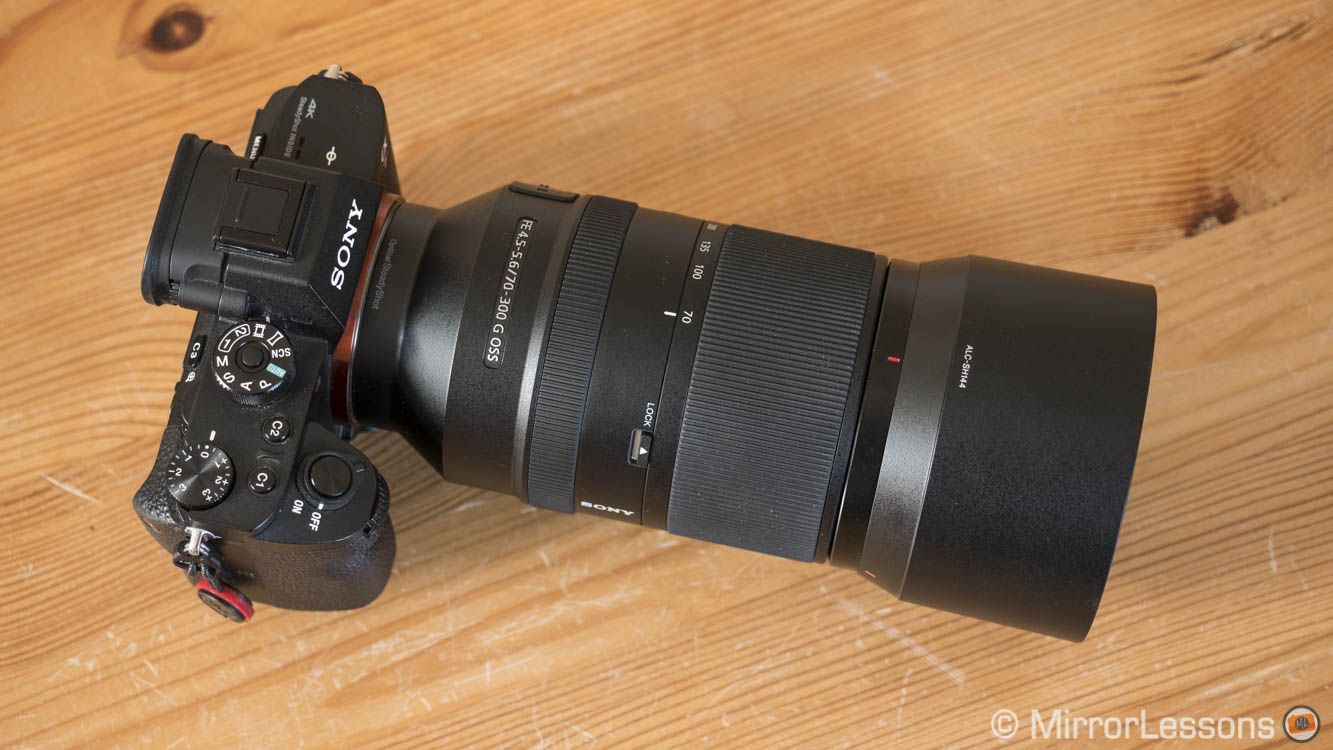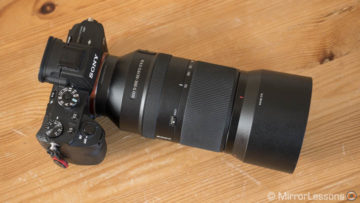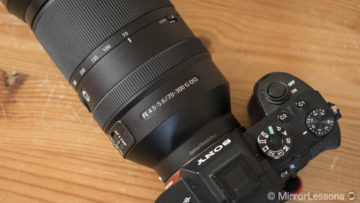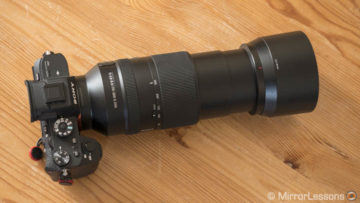The 70-300mmm G lens is the longest telephoto lens you can currently find for Sony APS-C and full-frame mirrorless cameras. This may not be the case for long, however, as Sony is committed to releasing more lenses for the E-mount system and rumors about a possible 100-400mm have already surfaced. Either way, a 70-300mm lens is a must-have zoom in every interchangeable camera system so let’s have a look at how good the Sony version is.
We had the chance to test the lens on the Sony A7r mark II and a6500. As with all our most recent reviews, you can check out all our findings in the video below!
Ethics statement: The 70-300mm was kindly provided to us by the London Camera Exchange shop in Chester. We regularly buy from them and are more than happy to recommend the shop to anyone living nearby (or further afield). The staff is very friendly and knowledgeable and they have a great selection of products. We were not asked to write anything about the lens nor were we provided with any other compensation of any kind. Within the article, there are affiliate links. If you buy something after clicking the link, we will receive a small commission. To know more about our ethics, you can visit our full disclosure page. Thank you!
Main Specifications
- Mount: E-mount
- Focal length: 70-300mm
- Lens configuration: 16 elements in 13 groups (4 Aspherical and 2 ED lenses)
- Lens coating: Nano AR coating
- Angle of view: 34° to 8.1°
- Minimum focusing distance: 90cm
- Magnification: 0.31x
- Aperture blades: 9 circular
- Aperture range: 4.5-5.6 to 22-29
- Filter diameter: 72mm
- Weather-sealing: Yes (dust and moisture)
- Optical stabilisation: Yes (Optical Steadyshot)
- Dimensions: 84mm x 143.5mm
- Weight: 854g
Video Review
Table of contents:
- 0:55 – Design and Build Quality
- 2:30 – Optical Quality
- 4:47 – Autofocus
- 5:07 – Optical Stabilisation
- 5:47 – Price and Conclusion
Summary of our findings
- The build quality is excellent and the lens is weather-sealed.
- The zoom and focus rings have the right smoothness and are precise to use.
- It is a little on the heavy side: it balances well on the A7r II, feels more bulky on the a6000 series but remains comfortable enough to use on the APS-C camera.
- There are various switches (AF/MF, Focus Limiter, Steadyshot, Zoom lock) and a handy Focus Hold button.
- Sharpness is excellent overall: it decreases slightly at long focus distances and at 300mm you need to stop down to f/8 or f/11 for the best results but overall the performance is good at the fastest apertures and across the frame.
- The minimum focus distance is 90cm through the entire zoom range which is quite nice for close-up shots.
- It has good bokeh capabilities and managed to surprise me more than once. With a more busy background it can become less appealing but overall it does quite well for this type of lens. It performs well for occasional portraits.
- There is very little vignetting, pincushion distortion or chromatic aberration but you can come across ghost flares in direct light.
- The AF motor is fast and silent. Nothing to declare here.
- The optical stabilisation delivers good results on its own. Cameras that have 5-axis stabilisation don’t improve the performance unfortunately.
- The only negative point is the price. The lens is quite expensive considering the target user for this kind of product.
Our verdict
The Sony 70-300mm G lens is a very good option, and at the time of writing, the only one really.
Sharpness is excellent, the lens focuses fast, it is well-built and it is easy to use thanks to the multiple switches and buttons on the side. Owners of an a6xxx camera might find it a little front heavy and large but I was comfortable using it on our a6500 for birds in flight and motorsports.
My only problem with this lens is the price as I mentioned above. It is twice as expensive as the average 70-300mm lens you can find for DSLR systems. I wish Sony had given it a lower price as this type of zoom is usually the first telephoto a beginner might consider and not everyone is willing to spend a lot of money on one.
Sample Images














